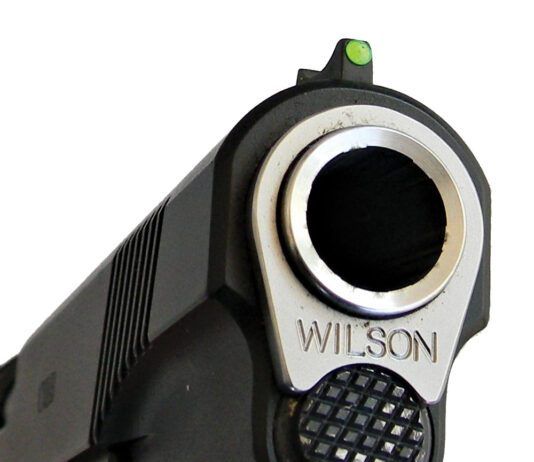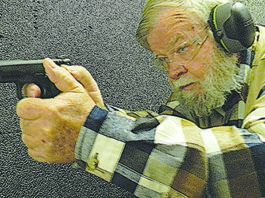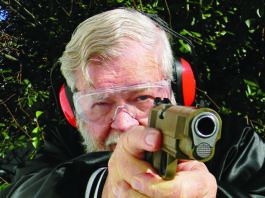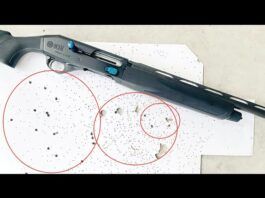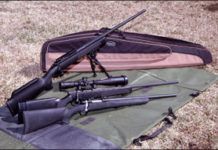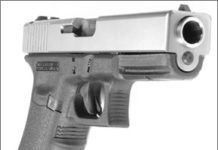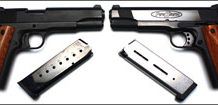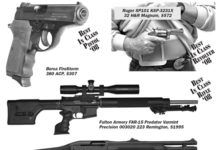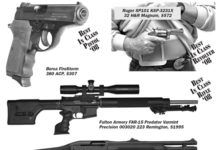SKS Standard Type 56 w/Fiberforce Stock 7.62x39mm
Ruger SR-556FB 5.56x45mm NATO 223 Rem.
To begin: The SR-556FB had a heavy contour, 16.12-inch chrome-lined barrel forged from Mil-Spec 41V45 chrome-moly-vanadium steel. The 0.700-inch-thick barrel had a 1:9 twist rate and was capped with an AC-556 flash suppressor. Our testers preferred the closed-bottom design of the other two guns’ hiders because they’re less likely to kick up debris if the shooter is on the ground. Chambered in 5.56mm NATO, the Ruger SR-556 also fired 223 Rem. ammunition.
Bushmaster XM15-E2S Super-Light Carbine 5.56mm NATO/.223, $1020
Arsenal USA Model SSR-85B 7.62 x 39mm (Russian), $550
Long-Shooter Showdown: We Test a Trio of Good Bolt Actions
Browning X-Bolt Medallion No. 035200227 7mm Rem. Mag.
Gun Tests Test Inventory Available for Purchase: August 24, 2009
Guncrafter Industries 50 GI Kit: Great Conversion for Glock 21
Alex Zimmerman has a great idea. We first experienced it a while back in our review of one of his Guncrafter Industries' 50-caliber 1911s, which we found to be a well-made handgun, if a bit on the costly side. Zimmerman's idea is to give the shooter something more without the cost of broken hands. Rather than a bang-up, hot and heavy blaster, the 50 GI is a throwback to older times when big bullets traveled at low velocities and got the job done at least as well as any small-caliber, high-velocity round. Some 200 years ago the norm was single-shot or occasional double flintlock pistols, which commonly threw balls of up to 12-bore in size at velocities in the low- to middle-hundreds of feet per second. But wait!, cried the 'engineers.' Those low-velocity rounds are all wrong, they said. They don't develop the muzzle energy of these new-fangled, higher-speed rounds, which depend on velocity squared to get their (largely misleading) high numbers. Thus, in today's terms, a 9mm high-velocity round can equal the 'power' of a 45 ACP, at least on paper. In the real world, those with experience know this is not quite the whole picture. Many experts always go for the bigger bore with heavy bullets.
Two Affordable 1911s: Rock Island Armory Beats Firestorm
There are many renditions of the Government Model 1911 45. Some have every feature and improvement known to man. Others are more utilitarian. You pay your money and you take your choice. There is certainly a market for a workingman's 45 with good features above those of the GI pistol, but which remains affordable. After all, many top-quality 1911 pistols start around $1000. There are a number of good GI pistols for under $500, but few 1911s below $500 also feature good sights and other advanced features.
However, we found two such affordable upgraded 1911s: The Rock Island Armory Tactical 45 ACP, $499, and the Firestorm DLX 45 ACP, $482. Each features Novak sights, or an approximation. Each features a custom beavertail grip safety and extended slide-lock safety. Beyond that, there are individual features and detail differences that may appeal to one shooter more than another.
We tested the two handguns with three types of ammunition, Black Hills 230-grain jacketed hollowpoint +P, Fiocchi 230-grain ball, and Winchester 230-grain Personal Defense jacketed hollowpoints. The results were interesting and conclusive.
Here's what we found:

























